Four-wheel laser alignment can expose all manner of nasties with your Volkswagen’s steering geometry and suspension. But what’s involved and why get it done?
Have you noticed uneven tyre wear, steering tugging to one side, soggy handling, or the steering wheel not centring itself when your car is moving in a straight line? Four-wheel laser alignment can identify what’s to blame, and even show on-screen the precise adjustments needed to get your VW back on the straight and narrow.
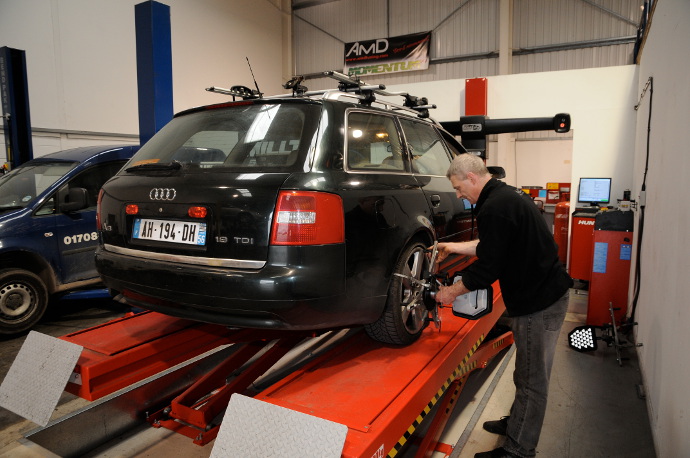
All worth doing, but the big reason why a growing number of classic Dub owners are getting it done is this. Digitally checking the alignment of all four wheels at the same time is a sure-fire way of detecting worn suspension components, accident damage and can also dramatically improve the way your older VW drives and handles. Also, if you’re hitting your water-cooled Volkswagen with a tuning stick and fitting lowering springs or coilovers, you’ll want to ensure everything is properly set up afterwards to take full advantage of the car’s new handling prowess.
How it works
The theory behind four-wheel laser alignment is hardly rocket science. Four precision digital cameras in the aligner tower measure the exact position and orientation of reflective targets which are mounted to all four wheels. The machine’s computer uses this data to calculate the car’s alignment and then compares these measurements to the manufacturer’s original (OEM) specifications. Most databases are massive and include a wide range of cars from the ‘60s, 70s and ‘80s – but if the information’s not there data such as toe-in and caster can be input manually. Usually these details can be obtained from the original manufacturer’s handbook, or chances are a club technical expert will be able to help.

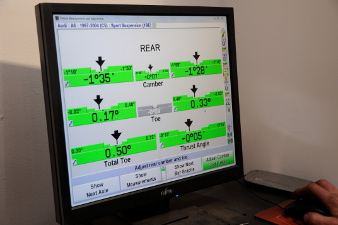
If the geometry is out, the technician can cross refer to on-screen information in order to make the proper adjustments to get all four wheels positioned straight ahead and parallel with the steering wheel centred. It’s as simple as that, and the check itself usually only takes a few minutes once the clamps have been fitted and the vehicle’s vital statistics have been tapped into the computer.
Why have it done?
In truth, it’s the best way to guarantee the proper alignment of all four wheels. If you are fitting replacement parts, it is the only way to accurately reset the car’s geometry; once the new parts have been fitted and the necessary factory settings retrieved from the database, the check is carried out and the necessary adjustments can be made to get the alignment spot on.
A growing number of tuning specialists who regularly fit lowering springs and stiffer struts are investing in four-wheel alignment kit so finding somewhere local to have it done shouldn’t prove too difficult. Most checks start at around £40. Adjustment, if necessary, will be extra but it’s money well spent because it can dramatically improve handling.
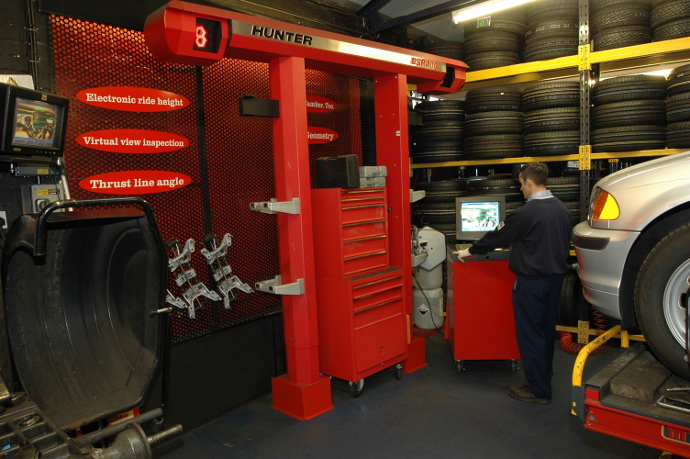
What does it check?
While most problems will be largely confined to the front wheels pointing in or out, four-wheel laser alignment kit is capable of carrying out a wide variety of other checks as well, including…
Toe-in/toe-out
This relates to the direction in which the two front wheels point relative to each other to prevent ‘crabbing’. Toe-in (where the wheels point inwards towards each other) will result in wear to the outer edge of the tyre, toe-out will affect the inner edge. With the clamps fitted, the car is rolled on the ramp so that each wheel turns 180 degrees. A median diameter is calculated to compensate for any out-of-roundness or buckles in the rims, and the toe information presented. By turning the wheel from lock to lock the machine can also tell whether the toe is correct on turns and that the locks are equal. Adjustment at the front is made to the track rod arm. Some cars also offer adjustment at the rear, and here it’s a case of tweaking the position of the trailing arm.
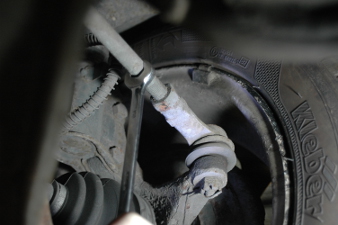
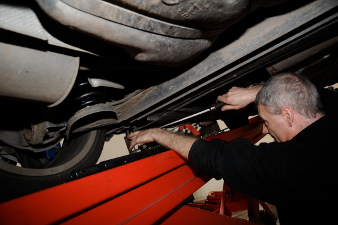
Set back
This is where one wheel on the same axle is set further back than the other. Usually the result of an accident, it can seriously affect handling because, on a bend, one wheel will be following a different arc to the other and have further to travel. There’s no real adjustment to correct it; it simply indicates that something is bent or damaged underneath – nine times out of ten the lower suspension arm.
Camber
Negative camber is where the top of the wheels are closer together than the track width, positive camber is the opposite. Incorrect wheel camber can not only affect tyre wear – causing harsh wear to the extreme edge of the tyre, but also handling. Camber is adjustable on the front of some cars and often it’s a case of loosening the three nuts on the top of the suspension strut and changing the camber before tightening up again. At the rear there’s sometimes a concentric nut and bolt arrangement at the bottom of the strut which alters the camber. Incidentally, introducing a little negative camber (up to -2 degrees) will increase both turn in response and grip so there’s instantly some improvements to be made here if you know what you are doing.
Caster
This is the degree to which the car’s steering axis is tilted forward or backward from vertical as viewed from the side. Negative caster will result in unstable steering, the kind you might experience when reversing at speed, while a positive caster is the norm and should result in an effect called ‘caster torque’ which automatically re-centres the steering. If the caster at each wheel is different, it will cause straight line instability and steering pull. Adjustment is usually made at the same time as camber.
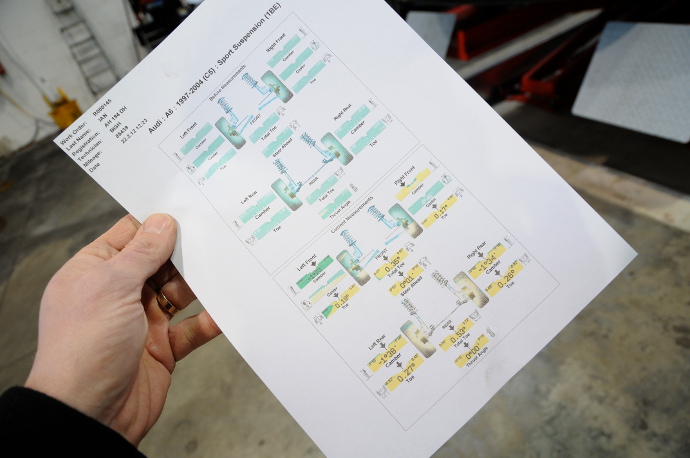
Ride height
Ride height is crucial to suspension geometry and the machine uses specific reference points on a vehicle, which are then matched to manufacturer’s specifications. Monitoring all four wheels will also tell whether the car is lower on one side or the other. It is also particularly useful in identifying wear in suspension components, and the computer will tell the operator exactly where adjustments can be made or which parts need replacing. Of course, the computer’s database of every different model will take account of whether, for instance, a sports suspension is fitted and amend its instructions accordingly.
Ian
The opinions expressed here are the personal opinions of the author and do not necessarily represent the views and opinions of VW Heritage.


Pot holes are getting worst here in Sheffield. I would recommend that everyone gets their tyre’s checked regularly. It can be very unsafe! I personally got mine checked at http://www.mbstractioncentre.co.uk/ and they took me through how unsafe it could have been.